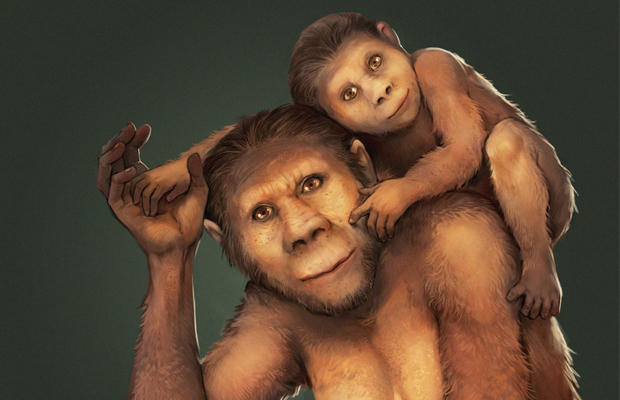Our two-million-year-old ancestors continually breastfed infants from birth until they were about one year old, an analysis of teeth has revealed.
Led by Southern Cross University and Monash University, the international team behind the study looked at teeth from Australopithecus africanus, which hailed from what was likely a somewhat harsh limestone landscape in South Africa.
Study contributor Professor Andy Herries, head of La Trobe University’s Archaeology and History Department, said the research potentially shows that living in these environments was difficult for our early ancestors, particularly as the climate began to change around 2.3 to 2 million years ago. The species faced long alternating periods of abundance and scarcity of nutritious food. And it wasn’t long until Australopithecus africanus was extinct.

Artist's impression of Australopithecus africanus mother and infant. Image: Garcia and Renaud Joannes-Boyau
It was those tough conditions that caused mothers to supplement gathered foods with breastmilk, explained geochemist Dr Renaud Joannes-Boyau, from the Geoarchaeology and Archaeometry Research Group at Southern Cross University.
We are what we eat
As teeth are the only part of the human skeleton that has direct contact with the environment and form through incremental layers of enamel and dentine, the authors said they are particularly valuable for reconstructing biological events from an individual’s early life.
Chemical signatures locked in the teeth reveal what young fossil humans were eating from day to day, month to month, explained Dr Alistair Evans, an expert in hominin palaeoecology at the Monash Biomedicine Discovery Institute (BDI).
To release the information about our ancestor’s consumption, the researchers used specialised laser sampling techniques to vaporise microscopic parts of the tooth’s surface that could be analysed for chemical signatures.
One of the trace elements the team zeroed in on was barium, as previous research has shown that the levels of barium in teeth correspond with increases in mother’s milk intake and slowly decreases during weaning.
Published in the journal Nature, the study found that barium, along with lithium and strontium, increased for the first year after birth and then continued in a cyclical pattern in the child’s early years.
University of New England Professor Stephen Wroe, a collaborator on the study, said this switching on and off of milk supply to sustain offspring when times were tough reveals mothers developed strong and persistent relationships with their children.
Dr Luca Fiorenza, an expert in the evolution of human diet at Monash BDI, said that finding makes researchers rethink the social organisations among our earliest ancestors.
The team will now turn their attention to species that evolved after 2 million years to develop the first comprehensive record of how infants were raised throughout the extinction of Australopithecus and the first occurrence of Homo.
Do you have an idea for a story?Email [email protected]
 Aged Care Insite Australia's number one aged care news source
Aged Care Insite Australia's number one aged care news source

